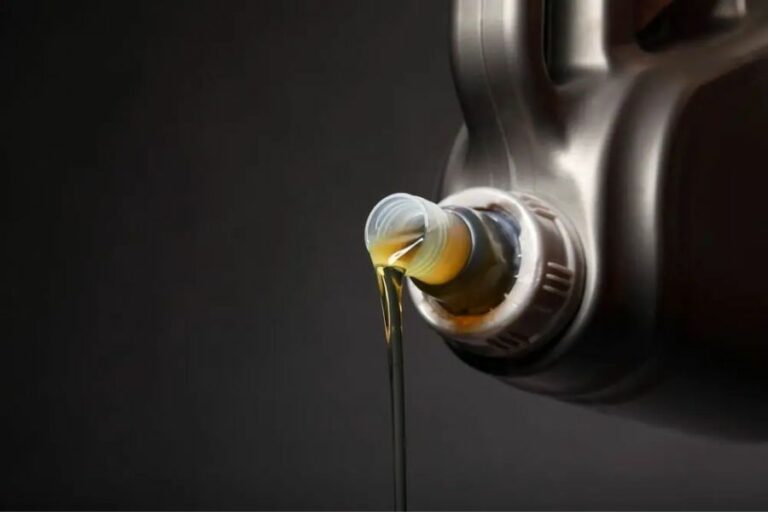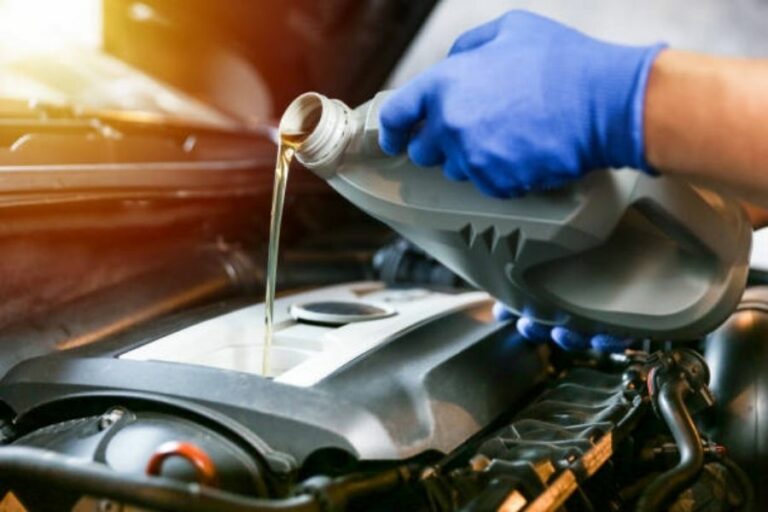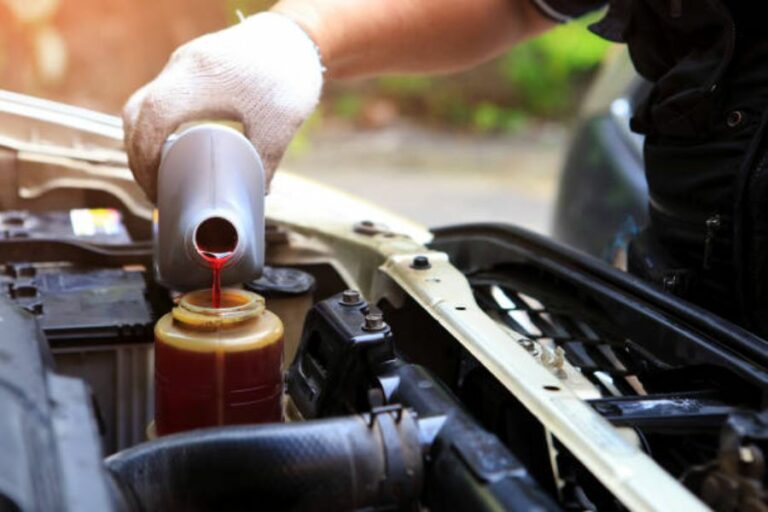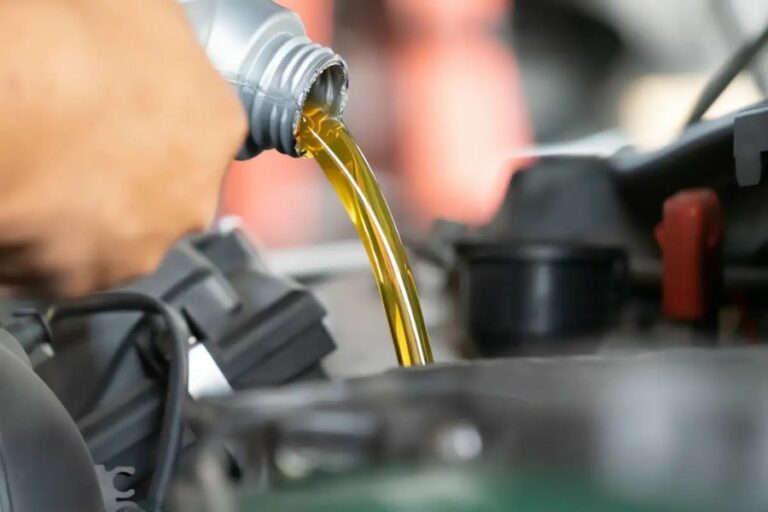Jaguar S Type Transmission Fluid Capacity & Recommendations
Adding fluid isn’t enough to keep the Jaguar transmissions functioning. Instead, you must understand the Jaguar S-type transmission fluid capacity to maintain these units and improve transmission performance.
Before adding fluid, you need to know the capacity levels and types of fluid required for different engine types and transmission units.
We’ll also talk about other relevant points about jaguar transmission fluid including the symptoms of low fluid, and how to check and fill it. Thus, keep reading to find out more!
Jaguar S–Type Transmission Fluid Capacity
The capacity of the S–type transmission can increase up to 1 to 8 L, based on the engine valve specs and transmission types. Here is a chart for better insights:
| Engine Type | Unit | Capacity |
| S-type 2.5 V6 | Transaxle manual | 1.1L |
| S–type 2.5 V6 | Differential, rear | 1.5 L |
| S–type 2.7 D | Differential, rear | 1.5 L |
| S-type 2.7 D | Transmission, manual | 1.6 L |
| S-type 2.7 D | transmission, manual | 10 L |
| S–type 3.00 V6 | Transmission, automatic | 9 L |
| S-type 4.00 V8 | Transmission, automatic | 9 L |
Read Also: Turbo 350 Transmission Fluid Type and Capacity: What You Must Know
What Type of Fluid Is Best for the Jaguar S Transmission
As Jaguar S models have both manual and automatic transmission designs, the manual and automatic fluid types (ATF) are the ideal choice for the vehicle. To be specific, you can’t use the manual type in an automatic transmission Jaguar.
Car manuals include the required fluid type for different models. You’ll notice that ATF is interchangeable with manual fluid for some specific jaguar S series. If the car or transmission heats up or builds rust, synthetic ATF works best to keep the vehicle functioning.
Both these types should be able to work in high temperatures. And they should feature smoother shifts and reduced friction benefits. Only then you can expect a heavy-duty performance.
Listen to what an expert says on fluid specifications in a YouTube video.
How to Check and Add Transmission Fluid to a Jaguar S-Type?
Changing the jaguar S-type transmission fluid level and adding it isn’t a messy job. So, if you want to save some bucks, take up this DIY project and follow these steps:
Method-1: For Manual Transmission
As manual transmission has different specs than the automatic unit, it’s necessary to lift the car and follow the procedure below.
Step 1: Position and Lift
Place the wheel chocks carefully across the rear tires. Go through the manual to note the suggested jacking points, then lift the car with a hydraulic jack up to that point.
Jack one front side at a time and jacking should be enough to easily inspect the parts underneath. Secure the position by placing jack stands under the lifted front points of the vehicle.
Step 2: Check the Fluid
Locate the fluid filler plug halfway above the transmission and remove the plug. Wear safety gloves and place a finger into the filler plug hole to check whether you can contact fluid.
If there is no oil on your finger, even after inserting it too deep, it’s time to add fluid.
In case you don’t want to insert your hand, take a clean stick that is up to 43 mm in height and make sure it can fit through the fluid hole.
Place it in the fluid and remove it to see where the fluid level is. Then, keep it beside a tape measure. If you notice the oil is at the half level of the stick, add fluid.
Step 3: Pour Fluid
With a fluid pump, add transmission fluid in a gradual way through the fill plug. Avoid pouring at once, or overflowing can damage the outer parts of the transmission.
Once you pour up to the manufacturer’s specifications, place the filler plug back in the hole. Lower the vehicle, and you are all set.
Read Also: Mazda 3 Transmission Fluid Type and Capacity [2003-2023 Mazda 3]
Method-2: For Automatic Transmission]
For an automatic gearbox, there is no need to jack the vehicle. But the engine must be in an ideal motion, as described below.
Step 1: Let the Engine Cool
If there are manual gears, sift through them and park the car on leveled ground. Shut down the engine and wait twenty minutes for it to idle and the fluid to settle.
Step 2: Locate the Dipstick
Open the bonnet or front hood, and as per the manual, try to locate the fluid pipes. If your Jaguar S-type model doesn’t have it, find the dipstick at the front or left of the engine.
For rear-wheel specs, we’d prefer locating the dipstick handle at the end of the engine block.
Step 3: Pull Out the Handle
The handle has fluid conditions readings labeled, so you need to pull it out with a piece of cloth. Place the handle back and remove it again.
If the fluid is below the “full/add” or at the “hot/cold” line, fluid change is a “must.” And for burnt or dark fluid color, you need to flush the fluid.
Step 4: Add Transmission Fluid
Pour the required fluid type through a thin funnel. Once the fluid is between the Add and Full lines, you must stop adding the fluid. Get inside the car and adjust the transmission settings to lubricate the transmission with the fluid.
Read Also: Allison 1000 Transmission Fluid Type And Capacity [An Absolute Know-All!]
Signs that Indicate Low Transmission Fluid Levels in the Jaguar S-Type
After driving specific miles, the transmission fluid level drops in the Jaguar S-type. And eventually, the vehicle starts showing signs of low fluid listed below –
- While changing gears, the manual and automatic transmissions make grinding and whining noises, respectively.
- Riding a Jaguar S–type on low fluid produces a strong burnt smell mostly from the overheated transmission.
- The transmission starts leaking or dropping off burnt or red fluid.
- Transmission indicator or the check-engine light flashes on display.
- While accelerating, the vehicle responds too slowly to the input.
- The gear controls don’t work correctly while reversing.
Transmission with low fluid shift gears with grinding sensation or roughly.
Read Also: Mercon Vs Mercon V: What’s The Best Transmission Fluid?
Common Problems That Can Occur If Transmission Fluid Levels Are Too Low
Low fluid level not only affects the transmission but also has an impact on the performance and the car’s different units. Here are those common issues you are likely to face –
Difficulty on Uneven Terrains
To turn in uneven terrain, you’ll need to accelerate at a snail’s place. But due to low transmission fluid, the car fails to pick up the input sent through the gas pedal. As a result, the vehicle hardly turns.
While going up a sloppy terrain or hill, the vehicle will hesitate. Even after pressing the pedal hard, the engine won’t get enough power to move the car up the hill.
And the worst thing is that the car will roll backward as it can’t hold the road’s gradient when the fluid is low. So, you’re putting your and others’ lives in danger by not adding the fluid!
Transmission Pan Wears Out
As the transmission pan doesn’t get proper lubrication without enough fluid, it tends to build up rust, especially around its seals. The corrosion can damage the functionality of the attached units.
Also, rough gear shifting causes wear and tear in the transmission. So, you will need to replace it even before its expected lifespan. Otherwise, the worn-out transmission can’t hold the fluid, let alone power up the engine.
Increased Fatigue
Studies suggest that noises from the car or the transmission increase the stress and fatigue levels of the drivers. So, you won’t be able to concentrate on the road properly.
The noise can distract you. Thereby, the vehicle can crash into other obstacles. These noises impair driving performance, even if you aren’t tired.
Read Also: Mercon Sp Vs Lv: Which Transmission Fluid Should You Use?
Frequently Asked Questions
You definitely don’t want to risk the transmission and driving performance without enough data on Jaguar S–type transmission fluid and capacity! So, for more insights, let’s go through these answers:
When should you change the transmission fluid on Jaguar S–type
For manual transmission, a fluid change is a must after a 30,000 to 60,000-mile drive. And for the automatic gearbox, adding fluid is ideal after every 60000 to 100000 miles. If the fluid burns earlier, change the fluid immediately.
What is the cost of fluid transmission servicing?
It depends on the package you choose for the service. Generally, experts charge around $125 to $250 for checking and adding fluid. Note that this cost can change based on the fluid type, car’s specifications, service–center type, and location.
What happens if you pour more fluid than the transmission pan capacity?
Overflowing transmission fluid won’t be able to lubricate the seals and transmission. As a result, rust will build up, and the pan will wear out. Also, the excessive solution makes the fluid foamy due to contact with the air above.
Can you check the fluid level in the sealed transmission of the Jaguar S–type?
Basically, you can’t open a sealed transmission to check the fluid level. In that case, you must contact a technician or schedule servicing. Or else, you can damage the other units of the car by trying to open a Sealed for Life gearbox.







